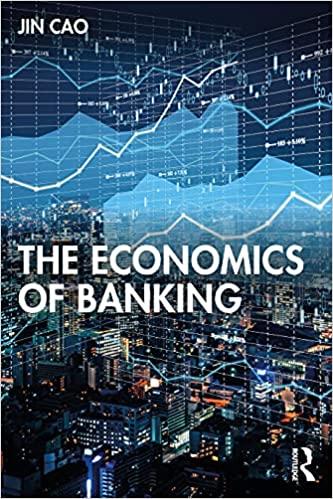Consider the equilibrium with intermediation, as described in Exercise 2 (d). Now we make several modifications in
Question:
Consider the equilibrium with intermediation, as described in Exercise 2 (d). Now we make several modifications in the setups:
- In the beginning of \(t=0\), a central bank creates fiat money and buys all endowments from the consumers at a price of 1 . The consumers then deposit the money in banks in exchange for a nominal deposit contract \(\left(c_{1}^{*}, c_{2}^{*}\right)\) that promises that an impatient consumer can withdraw \(c_{1}^{*}\) amount of money in \(t=1\) and a patient consumer can withdraw \(c_{2}^{*}\) amount of money in \(t=2\);
- Instead of conducting investment themselves, banks then lend all the collected deposits to entrepreneurs who have access to the two technologies. The nominal loan contract between banks and entrepreneurs requires that entrepreneurs have to allocate \(\alpha^{*}=\pi c_{1}^{*}\) resources in the storage technology and \(1-\alpha^{*}\) resources in the long-term investment technology, and the nominal gross loan rate is \(c_{1}^{*} / c_{2}^{*}\) if a loan is repaid in \(t=1 / t=2\). In \(t=1\), banks can ask entrepreneurs to liquidate some of the longterm investments with a return \(0<\delta<1\);
- Using the loans, entrepreneurs exchange money for endowments from the central bank. Afterwards the central bank extinguishes the money, and does not hold any goods any more. The central bank plays no role after \(t=0\);
- In \(t=1\), impatient consumers withdraw. To meet the cash demand of impatient consumers, banks recall some of the loans from the entrepreneurs and issue the equal amount of credit to impatient consumers. Impatient consumers use the credit to buy the products from the entrepreneurs, and entrepreneurs use the proceeds to repay the recalled loans;
- In \(t=2\), patient consumers withdraw. To meet the cash demand of patient consumers, banks ask the entrepreneurs to repay the rest of the loans and issue the equal amount of credit to patient consumers. Patient consumers use the credit to buy the products from the entrepreneurs, and entrepreneurs use the proceeds to repay the remaining loans;
- In the goods market between consumers and entrepreneurs in \(t=1 / t=2\), price of the goods is determined by the cash-in-themarket principle, or, the ratio of total cash (consumer credit) to total output of goods in that period;
- In \(t=0\), banks compete to maximize consumers' expected utility, and consumers gain utility from consuming real goods.
(a) Show that in equilibrium there is no liquidation of long-term investments.
(b) Show that the banks can replicate the optimal solution of the social planner's problem.
(c) Show that bank run that is characterized in Exercise 4 is no longer an equilibrium.
Exercise 2 (d):
(d) Suppose there is a competitive banking sector in the economy, in which banks take consumers' endowments as deposits at \(t=0\) and allocate between the two technologies. Consumers withdraw \(c_{i}\) at \(t=i\) according to their type \(i\).
i. Show that banks can replicate the optimal solution achieved in (a) i.
ii. Compared with the result in (b), how can banks improve social welfare in the economy?
Step by Step Answer:






